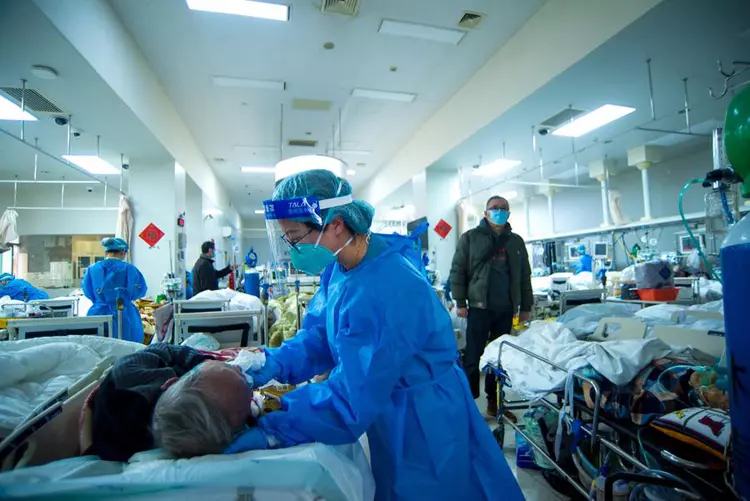
Shanghai “critical care peak has slowly emerged”, hospitals call for triage to make way for “life lanes”

Ruijin Hospital emergency rescue room.
A number of tertiary hospitals in Shanghai have seen a surge in emergency cases.
“With the increase in the number of newly crowned infected patients, the number of emergency room visits has doubled, and the peak of serious illnesses has slowly appeared, and we are focusing our efforts on ensuring the treatment of seriously ill patients.” Chen Erzhen, vice president of Ruijin Hospital affiliated with Shanghai Jiaotong University School of Medicine, told the Punch News on the evening of Dec. 29.
Like Ruijin Hospital, a number of tertiary medical institutions in Shanghai are facing a big test of emergency care. In Renji Hospital, the number of 120 visits climbed day by day in the past few days, and the two hospital areas, East and South, received a total of 269 ambulances in one day on December 28, ranking among the top municipal hospitals in the city. “Among them, the emergency attendance in the East Hospital area has reached 1,500 people/day, and the emergency attendance in the South Hospital area is also at 1,000 people/day.” Zhuang Xu, deputy director of the outpatient and emergency office of Renji Hospital affiliated with Shanghai Jiaotong University School of Medicine, revealed.
The surging news reporter learned in an interview that, at present, there are still a small number of “non-emergency” needs among the group of patients coming to tertiary care institutions for emergency care. In this regard, several tertiary hospitals appealed: “non-emergency” patients can be treated through general outpatient clinics or district hospitals and community health service centers, giving a “lifeline” for the treatment of critically ill patients. The “life-channel” for the treatment of critically ill patients.
Chen Erzhen revealed that the community’s diagnosis and treatment capabilities and drug reserves are being gradually improved. Next, the new crown antiviral drug supply will also be tilted to the community health service institutions, including domestic and imported small molecule therapeutic drugs, under the guidance and assessment of doctors to meet the treatment needs of some community patients.
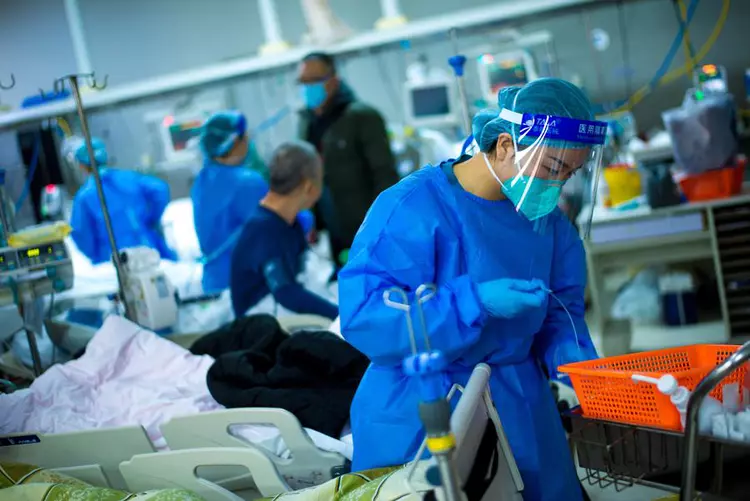
Ruijin Hospital emergency resuscitation room
Ruijin Hospital: The number of emergency room visits doubled, “non-emergency” demand still exists
“With the increase in the number of new crown infections, the peak of serious illnesses has slowly emerged, the pressure on emergency care is very high, and manpower is very tight.” Chen Erzhen said, the hospital in the past two days, fever clinic visits have been a downward trend, from the previous 600 people / day has been reduced to 300 people / day, but the number of emergency room visits have increased significantly, compared with the previous doubled, reaching 1500 people / day.
Chen Erzhen admits that currently, 80% of those who come to the emergency room with a new crown infection, of which the proportion of elderly people account for another 40%-50%, most of them are elderly people with underlying diseases that are aggravated by the new crown infection, and about half of those who have pneumonia manifestations in people over 65 years old, “among the patients admitted to the hospital, mainly including those with a tendency to become seriously ill, and Critically ill patients who present with hypoxemia, chest tightness and shortness of breath, etc. We need to closely observe the changes in their vital signs and take measures to save them at the first time.”
“For tertiary care institutions, focusing on treating critically ill patients is the top priority at the moment.” Chen Erzhen found that in the hospital’s emergency department, there are also some “non-emergency” needs of patients, such as some young people without underlying diseases after the infection of the new crown, fever, sore throat, mild cough, but no chest tightness, shortness of breath, came to the emergency department in a long line, and ultimately did not find any pneumonia manifestations.
Chen Erzhen also mentioned that there is also a misunderstanding about the consultation of some patients, “When someone has a cough, he or she comes to the emergency room and wants the doctor to help prescribe antibiotics and hang water. The new crown infection is caused by a virus, and antibiotics are for bacterial infections, so blindly hanging water does not provide relief.”
In addition, there are some people who come to the hospital to dispense the new crown antiviral drugs, want to prepare some drugs for themselves or the elderly at home, Chen Erzhen said: “This is also unnecessary, not everyone needs antiviral drug treatment, this drug also need to regulate the use, even in tertiary hospitals, this drug is mainly for inpatients to use. In the outpatient clinic, doctors will also make a comprehensive judgment based on the severity of the patient’s condition, such as pneumonia exudation, and strictly grasp the guidelines for the use of drugs, antiviral drugs should never be abused.”
Chen Erzhen also urged that for some people without underlying diseases, if there is only fever, muscle aches, mild cough, no obvious chest tightness and shortness of breath, they can give priority to community health services or district hospitals for consultation.
“At present, the community’s diagnosis and treatment capacity and drug reserves are being gradually improved. If they do not belong to the high-risk infection population and only have some ordinary infection symptoms, district hospitals and community health services can also meet the demand for treatment. If the symptoms are relatively serious, community doctors will also further determine whether the patient needs to be referred to higher-level medical institutions based on the patient’s condition, which is also to ensure classified treatment and reasonable access to care.” Chen Erzhen further revealed that the next, the new crown antiviral drug supply will also be tilted to community health services, including domestic and imported small molecule therapeutic drugs, under the guidance and assessment of doctors, to meet the treatment needs of some community patients.
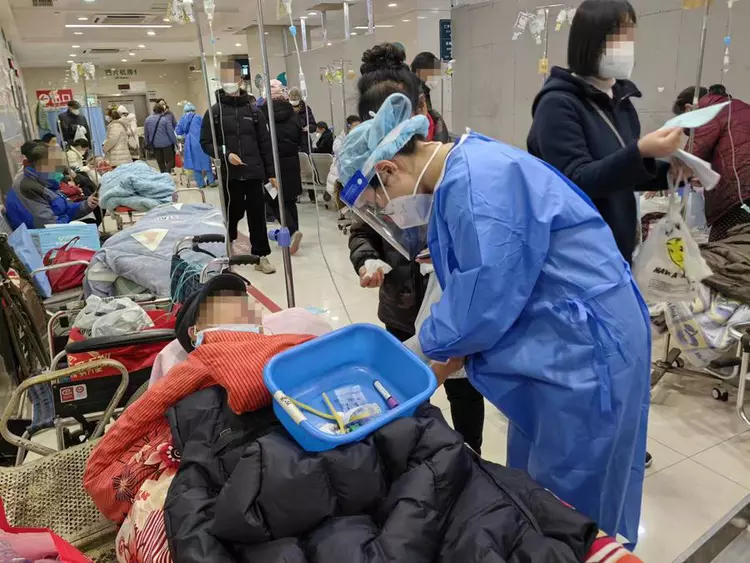
Renji Hospital Emergency Care
Renji Hospital: The number of 120 visits to the hospital has increased significantly, and most of the elderly have pneumonia manifestations
“Now, our fever clinic visits are down compared to a while ago, but the number of emergency visits has increased significantly, and many people come to the hospital for further CT exams because they have cough symptoms.” Zhuang Xu said in an interview with the surging news reporter.
Zhuang Xu said that at the East Hospital of Renji Hospital in Pudong New Area, the number of emergency room visits was previously maintained at 900-1,000 per day, but now it has reached 1,500 per day, plus 2,100 per day for the fever clinic. In the South Hospital of Renji Hospital in Pujiang Town, Minhang District, the number of emergency room visits has doubled from 500 to 1,000 per day.
In the process of increasing the number of emergency visits day by day, the number of 120 ambulances coming to the hospital has also increased significantly over the past few days.
The day before yesterday, 238 ambulances came from the two hospital areas, and the number is rising every day, “Most of the people sent by 120 are elderly people, and most of them have inflammation of the lungs, with hypoxia, chest tightness and other symptoms. chest tightness symptoms, and some are specialist emergencies such as abdominal pain and gastrointestinal bleeding.”
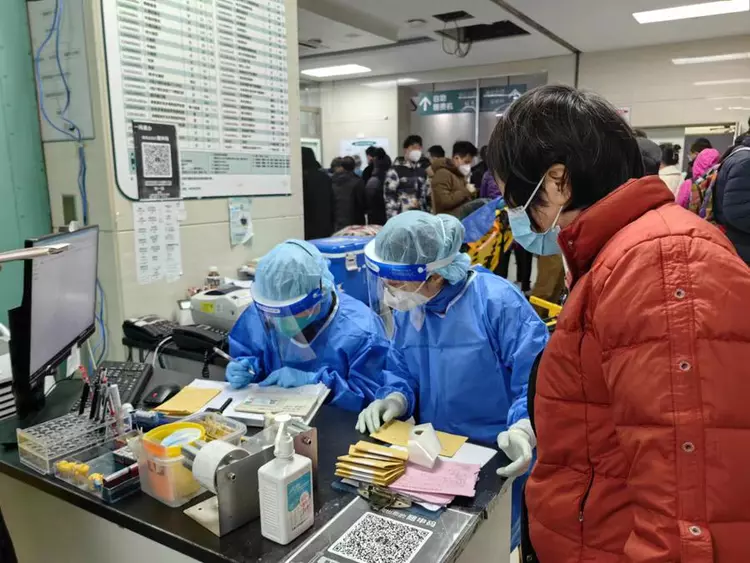
Renji Hospital Emergency Department
Zhuang Xu noted that, at present, behind the substantial increase in emergency patients, there are also some people who are not so urgent, someone who has a cough, come to the emergency room to take a CT, many for young groups, “I was at the pre-screening desk yesterday, met more than 10 such patients in an hour, most of the young people, most have no symptoms of fever, just come to see the cough. ” Zhuang Xu said frankly, at present in the new crown infected people, some young people with mild symptoms, even if their lungs have a small amount of exudate, most of them also belong to mild manifestations, oral medication can be, not all pneumonia people need to be hospitalized, really appear “white lung” situation is also rare, we do not have to be too alarmed.
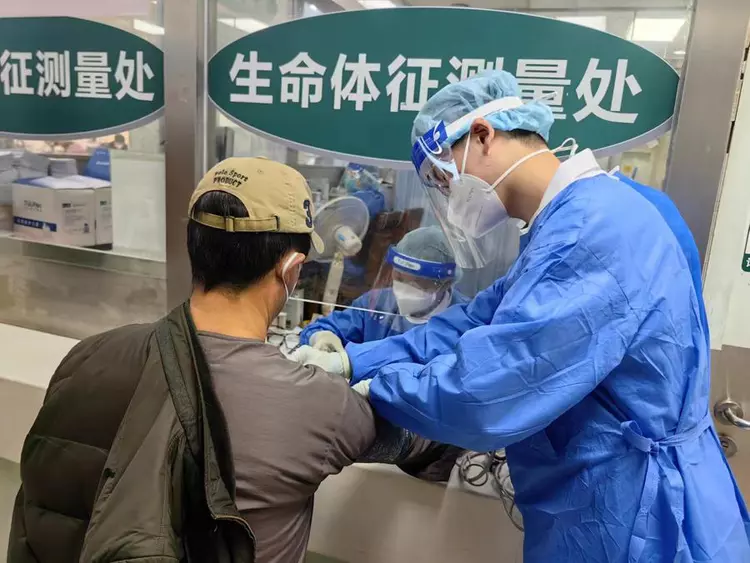
Vital signs measurement at Renji Hospital
In Zhuang Xu’s opinion, the most important thing for tertiary hospitals is to pay attention to elderly people with underlying diseases and new coronary infections, which have a high probability of developing into serious illnesses due to their age and poor tolerance and the presence of hypoxia, chest tightness and shortness of breath.
“Clinically, among the indicators of new coronary readmissions, finger pulse oxygen of 93% or less is one of them, and this group should pay special attention. At present, patients with severe disease are also mainly dominated by more underlying diseases and elderly people of advanced age. For some relatively mild patients, we will recommend the Internet hospital to consult, dispensing and so on.” Zhuang Xu said.
Zhuang Xu also called on some people, especially young people, who already have Yang Kang, to choose the hospital’s outpatient clinic for routine treatment and a routine CT assessment if they still have cough symptoms, so that emergency resources can be given to vulnerable people such as the elderly who really need them, or they can choose to go to some district hospitals or community health service centers that have the corresponding treatment conditions.
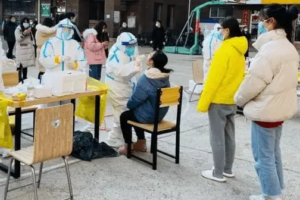

Average Rating